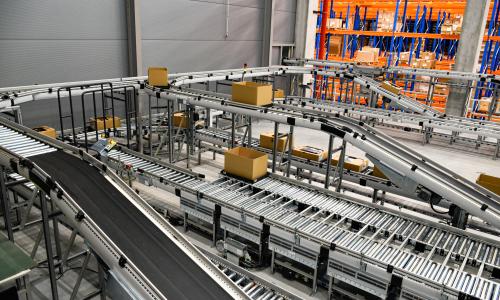
Staff shortages in logistics? Solve them with smart automation
Why is the logistics sector facing staff shortages?
The logistics sector is running at full capacity but is struggling to find enough workers. Due to an ageing population and a tight labour market, the supply of workforce is shrinking—while demand for logistics services keeps growing. The result? A structural staff shortage with serious consequences.
The impact on logistics companies
Staff shortages affect the entire logistics chain. Companies face challenges on multiple fronts:
-
Lower efficiency: Fewer workers mean slower processes and increased pressure.
-
Rising costs: Labour scarcity pushes wages up, while delays and mistakes add further costs.
-
Poor service: Late deliveries and incorrect orders lead to unhappy customers.
-
Loss of competitiveness: Without optimised processes, companies lose ground to more efficient rivals.
Smart automation as a solution
The answer isn’t working harder—it’s working smarter. Smart automation helps you do more with fewer people. For example:
-
Warehouse automation: Automated picking systems, autonomous vehicles (AGVs), and robotics reduce manual labour and increase speed and accuracy.
-
Digital workflow optimisation: A Warehouse Management System (WMS) centralises and automates operations, cutting costs and boosting efficiency.
-
Data-driven inventory management: Smart data analytics align inventory, transport, and picking. The key? High-quality master data. Optimisation depends directly on data quality.
First steps toward logistics automation
To tackle staff shortages structurally, don’t just implement tech—start strategically:
-
Identify bottlenecks: Which processes are slowed down most by lack of staff?
-
Rethink from scratch: Go beyond digitising problems—opt for real process optimisation through Business Process Reengineering.
-
Start small, scale wisely: Begin with repetitive tasks and expand gradually.
-
Invest in scalable tech: Choose solutions that fit your long-term strategy.
-
Involve your team: Don’t automate to replace—automate to improve working conditions. Focus on engagement and reskilling so your team thrives in a digital environment.
-
Work with an expert: Logflow helps you make the right choices, starting with a solid strategic vision. From design to go-live and beyond, we guide you through every step—ensuring your automation pays off.
Conclusion: automate your way out of staff shortages
Staff shortages in logistics aren’t a temporary issue—they’re a lasting trend. Companies that embrace smart automation today will be better equipped for tomorrow. You’ll boost productivity and customer satisfaction, and strengthen your competitive edge.
Ready to future-proof your logistics operations?
Get in touch with us today. Discover how smart automation can solve your staffing challenges.
